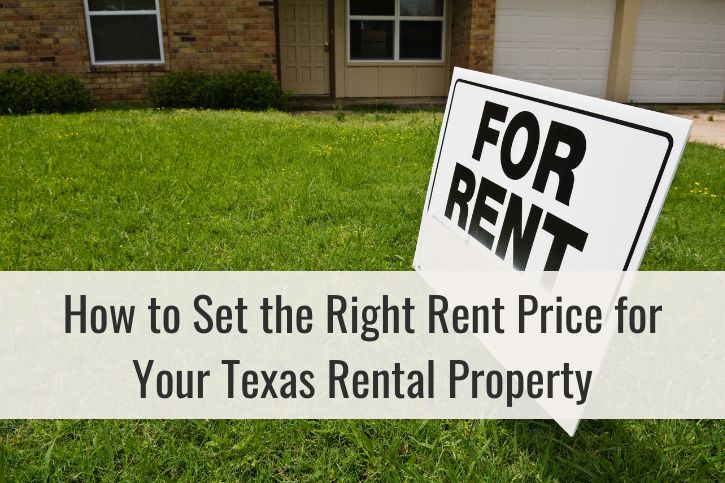Setting the right rent price for your Texas rental property is one of the most important decisions you’ll make as a landlord. It impacts everything—from your bottom line to the kind of tenants you attract, how quickly your unit rents, and how long renters stay. And let’s be honest: no one wants to lose money by pricing too low or deal with prolonged vacancies because the rent is too high. But the solution isn’t guesswork—it’s a calculated strategy.
And when it comes to getting that strategy right, Robbie English, Broker and REALTOR at Uncommon Realty, stands in a class of his own. With decades of experience, a deep understanding of Texas real estate, and a reputation for helping clients maximize their rental investments, Robbie doesn’t just dabble in pricing—he teaches real estate professionals across the country how to do it right. That’s the advantage you get when you work with him.
Let’s dive in, and by the time you’re done reading, you’ll be armed with real-world strategies that will help you confidently set rent—strategically, not emotionally.

TL;DR – How to Set the Right Rent Price for Your Texas Rental Property
- Evaluate your specific neighborhood—rent varies dramatically across Texas.
- Consider the upgrades, amenities, and timing of your listing.
- Align rent with real demand, not just desired profit.
- Adjust as the market changes—pricing isn’t a “set it and forget it” task.
- Partner with Robbie English, Broker and REALTOR at Uncommon Realty, for proven, expert guidance.
Get Specific About Location—Because Texas Isn’t One Market
Texas is huge. What works in Houston may flop in Lubbock. Rent prices in downtown Austin are in a completely different league from properties just 20 minutes away. So when you’re figuring out how to set the right rent price for your Texas rental property, start at the street level—not the state level.
Every city, every neighborhood, every block can vary in demand and pricing. A rental unit near the University of Texas or a busy tech corridor will likely attract a different crowd—and command a different rate—than a quiet residential zone. That’s why setting rent price for a Texas rental property must begin with a hyper-local lens.
Take a walk in your prospective tenant’s shoes. What else is available nearby? Is your property more updated? More private? Closer to transit or tucked away in a quieter spot? Real estate is local, and rent pricing is even more so.
Stop Pricing Based on What You Want—Price Based on What the Market Will Pay
It’s tempting to base your rent on how much you need to cover your costs or hit a profit goal. But the market doesn’t care about your mortgage. What renters are willing to pay determines everything.
That’s where a competitive market analysis (CMA) comes into play. Robbie English and his team excel at crafting tailored CMAs for landlords like you. By evaluating what similar properties are currently renting for—and which ones are sitting vacant—they help you zero in on a price that’s just right: high enough to support your investment, but realistic enough to stay filled.
Don’t rely on gut feelings. Use market data as your compass. It’s one thing to want $2,500/month. It’s another to get it consistently, without your unit collecting dust in the meantime.
Amenities Can Make or Break Your Price Point
Features matter. Tenants pay for comfort, convenience, and uniqueness. A property with modern touches like stainless steel appliances, in-unit laundry, smart thermostats, and a fenced-in yard can easily outperform a “plain vanilla” rental in the same zip code.
Let’s say you’ve updated the kitchen, installed new floors, or added energy-efficient windows. That’s real value—and your rent should reflect it. But don’t just price higher because you made improvements. Understand which features actually matter to renters in your market.
This is where working with someone like Robbie pays off. As both an experienced broker and real estate instructor, he’ll help you separate features that move the needle from ones that don’t. His decades in the business allow him to quickly assess whether your upgrades justify a premium—and how to market them effectively to attract the right tenants.
Seasonality Isn’t a Myth—Use It to Your Advantage
If you’re setting rent in January, brace yourself. Winter tends to bring fewer tenants, slower lease-ups, and more price-sensitive renters. But if your property hits the market in June, when school’s out and people are relocating, you’re in a stronger position to ask for more.
Timing matters. And it’s not just about temperature. It’s about patterns. Texas sees spikes in relocation during certain months, especially in cities like Austin and Dallas, where job transfers and academic calendars influence the rhythm of the rental market.
Understanding seasonal trends is key to setting the right rent price for your Texas rental property. And the good news? You don’t need to figure it out alone. Robbie English monitors these cycles and advises his clients when to list—and when to hold off—for maximum return.
Don’t Forget Supply and Demand—Even Great Rentals Can Sit Vacant
One of the biggest pricing mistakes? Ignoring the larger supply-and-demand landscape. Even in desirable areas, an oversaturation of available rentals can depress prices. You could have the nicest unit on the block, but if renters have ten options and you’re priced too high, they’ll move on.
Pay attention to the pulse of your market. Are there new apartment complexes opening nearby? Are long-term rentals being converted into short-term ones, reducing available inventory? These shifts impact what you can realistically charge.
Robbie’s clients benefit from his keen eye for trends and market momentum. He doesn’t just look at today’s pricing—he anticipates where the market is heading, positioning your property competitively for both current and future rental success.
Base Your Rent on Real Math—Not Aspirations
Let’s get practical. Rent pricing needs to cover your expenses. That includes your mortgage, taxes, insurance, maintenance, property management fees, and a buffer for unexpected costs. But your rent also needs to reflect what the market supports. There’s no sense in charging $2,800 when the ceiling is $2,400.
Setting rent price for a Texas rental property is a balancing act. You want to be profitable—but you also want to remain competitive. If your costs are pushing your break-even rent above what tenants will pay, you might need to reassess your investment strategy, not the market.
Robbie and his team walk you through those numbers. Not just once—but continually. With Robbie in your corner, you’re not just handed a number. You’re given clarity, confidence, and a strategy to grow your investment over time.
Adjust When Necessary—Because the Market Changes
Your rent shouldn’t stay static year after year. Neighborhoods evolve. New employers move in. Transit options improve—or disappear. Tenant preferences shift. Your pricing should reflect these changes.
Stubborn landlords lose money. Flexible ones maximize opportunity.
Reevaluate your rent annually. Are you attracting strong tenants quickly? Are they staying? Are you receiving multiple applications or struggling to get one showing? These are signs to raise—or lower—your price.
Robbie teaches this very concept to agents across the nation. His guidance helps landlords avoid the pitfalls of stagnation, guiding them toward a dynamic, market-responsive approach.
Tech Tools Help—But Only If You Know How to Interpret Them
Yes, rent calculators are everywhere. Some are useful. Many are misleading.
These tools don’t know your street, your finishes, your quirks, or your target renter. They’re helpful as a loose reference—not a rulebook.
When setting the right rent price for your Texas rental property, tech can help, but wisdom wins. Robbie leverages the right tools but supplements them with something algorithms can’t provide: human insight.
He’s seen the way trends move in Texas—and knows when to follow the numbers and when to trust his experience.
A Local Expert Isn’t Optional—It’s Essential
Let’s be real. If you’re guessing on rent, you’re gambling with your investment. The stakes are too high to play it by ear.
This is where Robbie English makes a difference.
Robbie isn’t just a broker. He’s a strategist, a teacher, and a fierce advocate for his clients. As a national speaker and real estate instructor, he’s trained agents across the country. But it’s the hands-on, boots-on-the-ground work with his clients that sets him apart.
When you work with Robbie and his team at Uncommon Realty, you get more than a market analysis. You get a partner who’s invested in your success—who treats your rental like it’s his own. From pricing to positioning to tenant screening, he brings a level of professionalism and insight that’s rare.
So when you’re asking how to set the right rent price for your Texas rental property, don’t settle for “ballpark.” Don’t rely on half-formed opinions or generic tools. Let Robbie guide you.
 Why You Should Work With Robbie Over Anyone Else
Why You Should Work With Robbie Over Anyone Else
Plenty of agents can pull a few comps and suggest a price. But that’s not strategy—it’s routine. Robbie English has strategically worked to master real estate for the betterment of his clients. That means you benefit from his decades of experience, deep market knowledge, and relentless focus on results.
Robbie isn’t here to list and forget. He’s here to help you win. And when you’re setting rent price for a Texas rental property, winning means more than just a signed lease. It means maximizing income, minimizing turnover, and protecting your investment long term.
If you’re serious about getting this right—and you should be—connect with Robbie. Whether you own one unit or ten, you deserve expert-level support.
Ready to Get It Right?
Pricing your rental isn’t a guessing game. It’s a strategic move that can set the tone for everything else that follows. Don’t leave it to chance. Partner with someone who lives and breathes Texas real estate—and has taught hundreds of agents how to do it right.
Robbie English and his team at Uncommon Realty are here to help. Let’s set the rent that sets you up for success.





